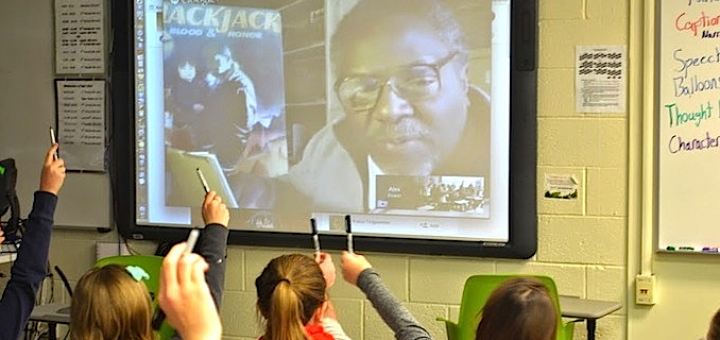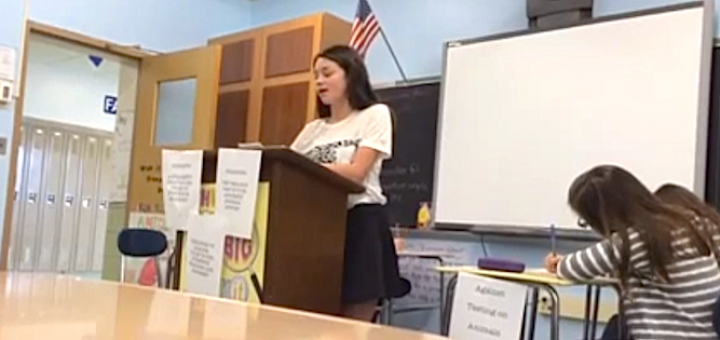Teaching and learning in grades 4-8
When Sandy Wisneski engaged middle graders in a comic book project that combined writing, art and social studies, she wanted a whiz-bang culminating activity. She struck virtual gold when she found professional comics illustrator and author Alex Simmons.
Common Core tests require students to analyze two literary texts and compare & contrast themes or points of view. Literacy consultant Sarah Tantillo shares a better tool to help students organize these essays. Included: Links to all her PARCC Prep articles.
Ratio and proportion get a thorough treatment in Anne Collins and Linda Dacey’s new book, reaching from potential challenges and misconceptions to individual needs, with CCSS present for each of the many activities, says reviewer Ashley Walther.
Gretchen Owocki tackles complex literature, informational texts and content-area reading in her new middle grades CCSS book, weaving together instructional elements in a teacher-friendly format. Reviewer Anne Anderson highly recommends it.
The Power of Teacher Leaders will empower readers to mobilize colleagues to positively affect school change and student achievement through shared and collaborative practice. See it happen in case studies, says reviewer Linda Biondi. With an online study guide.
Summarizing may seem simple to adults, says teacher/author Heather Wolpert-Gawron, but it’s a cross content skill that many adolescents struggle with. TweenTeacher shares techniques from her classroom, including asking students to create ‘executive summaries’ of information & research.
The Common Core expects students will support claims with evidence from a text. History teacher Aaron Brock shares an innovative technique he created to help weak readers in his under-resourced urban school develop an understanding of this process.
When middle grades teacher Mackenzie Grate introduced a “kindness chain mail” project into her classroom, she was pleased to see that the secret letter exchanges helped students realize their ownership role in assuring a positive learning environment.
With the winter “read by the fire” season in full force, we offer a selection of 20 MiddleWeb posts that have garnered thousands of views apiece. They represent the wisdom & expertise of middle grades educators with a wide range of teaching experiences.
This fall at her students’ instigation, Amber Chandler decided to give debate a try. She describes her process, her inclusive approach, and several lessons learned during a positive experience that also supported common core standards. Videos included!








































